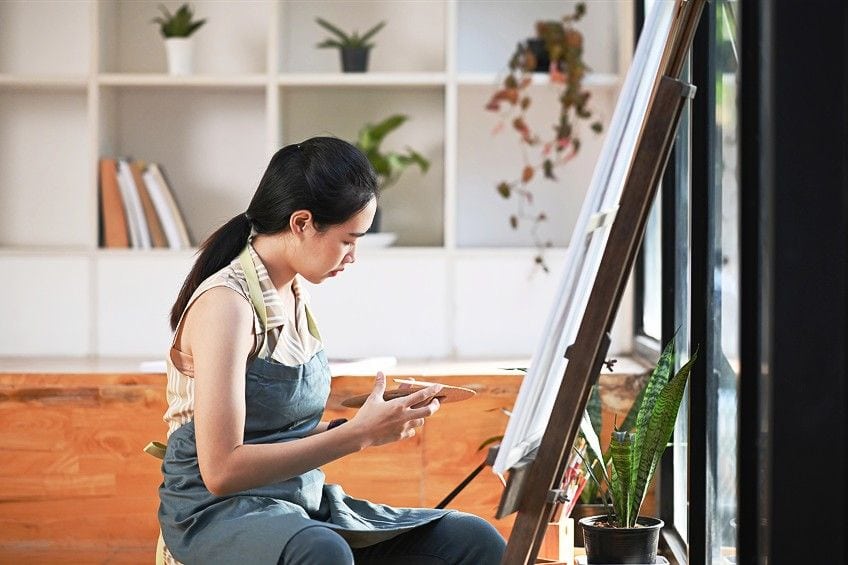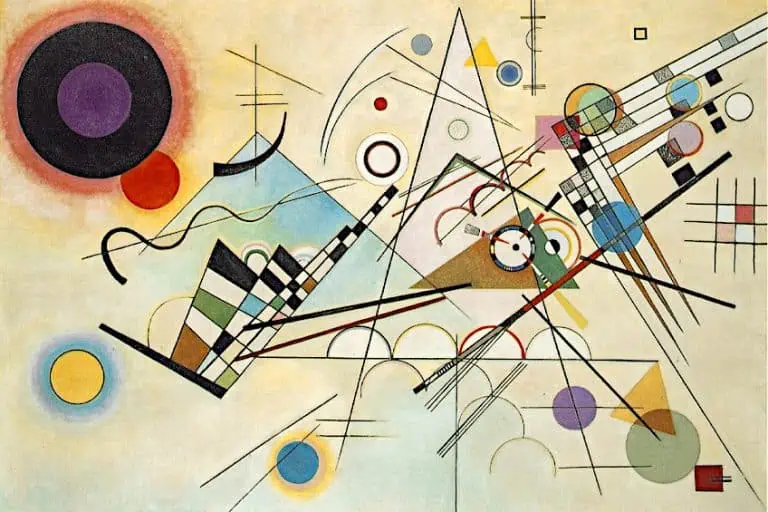What Are Art Commissions? – A Guide to Getting Art Commissions
This post may contain affiliate links. We may earn a small commission from purchases made through them, at no additional cost to you.
Being a professional artist involves much more than simply creating. You have to learn and understand the business side of things as well. For some, this is a challenging aspect, as it can take up a lot of time dealing with drafting letters, advertising, marketing, and sales. One of the ways to make sales is by art commissions, but what are art commissions?
Table of Contents
What Are Art Commissions?
Art commissions can be explained as a request for a creation of a piece of art. This can be requested by an individual, businesses, and also by governments. Many of the commissioned art pieces are sponsored and then used for public display.
Today, anybody can approach an artist and commission paintings and other art pieces. Artists are usually quite happy to create an art piece according to a client’s needs.
If a client chooses an artist, it means that they are mainly looking for something in that specific style and medium. There are many reasons why a buyer wants a commissioned art piece, for example, it could be they could not afford existing artwork. Businesses also commission work they can incorporate into their branding or use for a particular project.

Not all artists offer commissioned art pieces, however, many are open to the idea and if you have an idea, do not be afraid to make a query. Art commissions can be a way to obtain more affordable pieces, create a piece that fits into your business or home space, or as something to add to your personal art collection. Commissioning art can be a personal process for both the artists and the person requesting it.
There is a lot that goes into it, but the outcome is a unique piece of beautiful art. There are a few titles that can be attached to the person requesting the commission. The most common is a buyer, who is referred to as the client, but it can also be a patron or benefactor. You can also get a commission on an artist’s work, which is different from art commissions. This usually involves an art gallery, which then sells the art on behalf of the artist. In return, the art gallery takes a percentage of the sale, which is the gallery’s commission. Whatever is left after the commission is taken off, is what the artist receives.
You can say that the gallery acts like a patron and provides a place for the art to be displayed and marketed.
How Does Art Commission Work?
When looking at the history of art, commissions were popular with the rich and the rulers or governments of the time. Many rulers commissioned art pieces and then placed them on public display, which was a way to demonstrate their wealth and power. Many art pieces were and are used for political and propaganda purposes. For example, in Ancient Rome, some architectural undertakings like the Roman Colosseum were commissioned by Emperor Vespasian as a sign of imperial grandeur.

In the past, art commissions were solely done for the wealthy as it was very expensive. However, today it is a lot more accessible to everyone. This is especially true since there are now art commissions websites available, where artists and clients can find each other at a click of a button. So, how does art commission work? This simply means that an artist can be approached for job opportunities in exchange for payment. This process can sometimes happen by chance when somebody sees your artwork and then wishes to commission a piece. You can also be an established artist who works with an agency that helps to find job opportunities for you.
As an artist, if you are open to commissions, it is a great opportunity to get your work out there. Clients will more than likely want to share the commissioned work with others, so encourages others to purchase your artwork. Do things yourself by creating an online art portfolio website, making sure to have all the information for commission work readily available. This means having a rundown of fees and making sure you state that you are available for commission work.
What are some of the guidelines and rules for both the client and the artist when it comes to art commissions?
Client Guidelines
You might be an art lover and you find an artist you love. However, they do not say if they accept commission work on their website. This is not a problem; you can simply contact them and ask. There is a good chance that they will get back to you with a positive answer and all the information you need. You will more than likely send it through an email, makes sure to be polite and include all the information that is needed. This means sharing all your ideas and asking questions clearly and helpfully. If the artist is willing, you should expect to get a contract, which is legally binding to both parties. Do not be put off by this as it is a sign of professionalism and is a way to avoid future misunderstandings and problems.
Artist Guidelines
As an artist, you should also be prepared for this type of work and is a way to gain recommendations for your artwork. Just as clients should respect you as an artist, you should respect them as a client. If you feel that the offer is not something you wish to pursue, then let them know in a polite way that you think it is not a good fit.

Make Things Clear
When it comes to commissioned paintings or other artworks, sometimes the client is not quite clear on what they want. So, if you do go ahead with a commissioned piece, make sure you are both on the same page and clearly understand the idea and what the entire process involves, including how long it will take to complete a piece. Art commissions are usually a collaboration, so you will need to come up with a plan and create thumbnail sketches and other considerations. You might have to revise your work, when in communication if the client wants to revise, there has to be a clear and good reason.
Add this into the contract, how many revisions you are willing to make, and the additional costs involved to do this.
Writing the Contract
The contract should be written and reviewed thoroughly. The contract is there to protect you as well as the client. For example, if the client does not want to pay for something you agreed upon, the contract is there to make sure this does not happen. Include every possible detail in the contract from the idea to the media you are going to use, size and dimensions, how long it is going to take, and revision fees.
You should also state if there should be a down payment, the due dates to make payments, copyrights, delivery dates, and shipping methods. Sign the contract before you begin on the commissioned art piece. You do not want to start something and then the client backs out, and you are left wasting your time and money. Also include an approval process for every step, which you can outline in the contract.

For example, if you provide the thumbnail sketches, the client should provide feedback and sign off before moving on to the next step like adding colors. Communication is important, as you want the client to be happy. However, if you already have a contract but the client is rude, do not stand for it and stand up for yourself as a professional.
What happens if you follow the guidelines and steps, and prepare a detailed contract that both parties agree upon, but the client tells you they do not like the work in the end? Simply remind them of the contract and the feedback you received that they signed off on. However, if the contract is thorough and there was good communication, this should not be a problem. Once the commission is done and paid for, it is also a good idea to follow up a month or so later to see how the client is enjoying the art.
Adding touches like this to your service can only help to improve sales.
How to Get Art Commissions
In this day and age, it is a little easier to get art commissions. There are quite a few art commissions websites you can join as an artist. Besides these types of websites, there are also other options you can try when looking at how to get art commissions.

Artist Guilds
In many cities around the United States and the world, you should be able to find a local artist’s center. For example, The Central New York Art Guild (CNYAG). These guilds are similar to art galleries and usually have a list of artists that clients can look up. As an artist, it helps to have a presence within the local area.
To find an artist guild, simply type in “artist guild” followed by the name of the city you live in.
Personal Website
You can set up your own website, which offers you more control over the whole process. However, this will take time and dedication before it proves fruitful. You will also be competing with other platforms, so you will need to understand how to get traffic to your website, do your own marketing, and any other ins and outs of managing your own website. You can also use other social media platforms like Instagram to get people to your website, which adds a bit more of a personal touch to the process.

Marketplace Platforms
This type of platform offers a community of artists, who showcase their work and can be commissioned. You might find some free platforms to join, however, for better quality, it is best to join where there is an application fee. For example, MadeMay. Here, artists can set up an account and profile. Clients can click on the profile and hire an artist if they are interested. Artists can also accept or decline the commission.
Fiverr is another example of a freelance online marketplace where you can advertise art commissions.
Instagram for Artists
We have already mentioned Instagram, and it is a wonderful platform on which to display your art and talent. You must follow a few instructions to make sure your work is seen. For example, you should use hashtags when you post captions. There are many hashtags you can use, and that fit your niche. For example, #petportraits, and do not forget to also include your location like #LosAngelesArtist. You should also post quite regularly using these hashtags.

This platform is a network of different communities. Reddit is free to use and can be divided further into “subreddits” or topics including art. Many of these subreddits are there to help connect artists and clients for art commissions. You can simply search and use keywords like ArtBusiness or ArtCommission. You simply sign up and you can post at least once a day to establish a presence.
Since this is a free platform, you do unfortunately get some scams doing the rounds.
Etsy
You can also try using Etsy to get art commissions, and it is quite a popular platform. Since so many artists use the platform, it can become quite competitive. So, to get better traction, try to include a variety of creations. There is also a seller’s fee if you sell anything on the platform.

Another popular platform for all forms and types of artists. Again, posting regularly can help to create a presence. Make sure you caption your posts appropriately so that people can find you without difficulty. Specify what type of art and medium you do. People can also save and share your images and links, so it is something to consider if you want to make more sales online.
Public Art Commissions
A public program provides a chance for people to come across art pieces in public spaces like public venues, libraries, parks, or community centers. In the United States, there are over 300 programs, which utilized commissioned art pieces that can be permanent or just temporary and can range in commission prices. Many of the art commissions are only given to resident artists, however, others are open to artists living anywhere. Commissions can be all types of art from paintings to sculptures, and even sound pieces.
There is a chance for most artists to participate. How do you find these opportunities?
- Since these are offered by public agencies, the opportunities must be advertised. This can be a single website, or it can be advertised where artists usually look, for example, popular newsletters and artist websites.
- Listings can also be through social media, art agencies, and other public art listing services.
- You can start by looking at the state or city art councils or public art programs, which can be found in various cities.
- Transit art programs are also available. Many of the public transit authorities like airports, provide public art programs, which are separate from the city art programs.
How to Price Commissions Art
When figuring out how much to charge for the commission it will depend on the quality of work, your reputation as an artist, the time it takes to complete, and the skill involved. You will also have to work out what you spend in a year overall to make sure you earn enough. The type of client can also play a role in what prices you offer, which might be different for a regular individual versus a large and successful company. When looking at how to price commissions art, you take an hourly rate, which depends on your skill and then you work out how much time it will take to make. For example, if you are only a beginner, you can charge a minimum wage of around eight dollars an hour.

Then, if you know how much time it is going to take to complete the artwork, multiply this by the hourly rate. So, to provide a fee it would be eight multiplied by say 4 hours, which will then give you an amount of 32 dollars. As you build more of a name for yourself, you can increase your hourly fee. Of course, this is a very basic formula for working out a fee. To provide a more accurate fee, you should also consider all the costs and other factors.
When Should You Ask for Payment?
When offering art commissions, you should always ask for payment upfront, or at least a percentage before you begin working. This helps you as an artist to buy materials and provides an incentive for the buyer not to back out at the last minute. The ideal option is to make a 50:50 payment.
Fifty percent beforehand and then the rest of the payment after the work is done.
Who Owns the Commissioned Art Piece?
So, once the commission is done and the client has paid and received the artwork, who ultimately owns the art piece? This all depends on the licensing rights provided to the client in the contract agreement. You as an artist can keep all the rights, or you can share or transfer all the rights over to the client. However, if you do sign over all the licensing rights, you should consider asking for a lot more money.

If you are an artist and thinking about offering art commissions, we hope this article has shed some light on the matter. Art commissions are a great way for you to learn how to work with clients, and it is a way to generate interest and bring in new business opportunities.
Frequently Asked Questions
What Are Art Commissions?
Art commissions are special requests made from a buyer to an artist. The request usually involves a specific style, medium as well as subject matter. For example, the request could be for a painting of a family pet. However, there are many reasons why someone wants a commissioned art piece. The artist then works with the client and takes separate time to complete it.
How Long Does a Commissioned Art Piece Take to Complete?
All the details for art commissions should be clearly stated and placed in a contract, along with all other relevant information. The time to complete art commissions for an artist can vary. The time depends on the schedule set within the contract. However, generally, it can take about four to twelve weeks for completion.
Should You Have a Contract for Commissioned Artwork?
A contract is important for both the buyer and artists, whether it is for an individual or business, a contract is there to protect both parties. The contract helps define all expectations and holds all parties accountable.
In 2005, Charlene completed her wellness degrees in therapeutic aromatherapy and reflexology at the International School of Reflexology and Meridian Therapy. She worked for a company offering corporate wellness programs for several years before opening her own therapy practice. In 2015, she was asked by a digital marketer friend to join her company as a content creator, and it was here that she discovered her enthusiasm for writing. Since entering the world of content creation, she has gained a lot of experience over the years writing about various topics such as beauty, health, wellness, travel, crafting, and much more. Due to various circumstances, she had to give up her therapy practice and now works as a freelance writer. Since she is a very creative person and as a balance to writing likes to be active in various areas of art and crafts, the activity at acrylgiessen.com is perfect for her to contribute their knowledge and experience in various creative topics.
Learn more about Charlene Lewis and about us.







